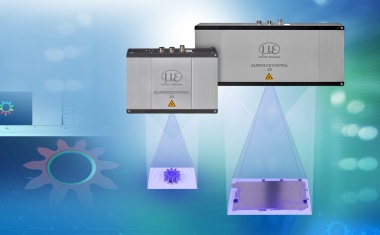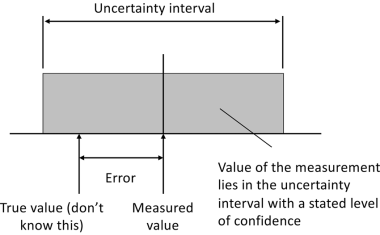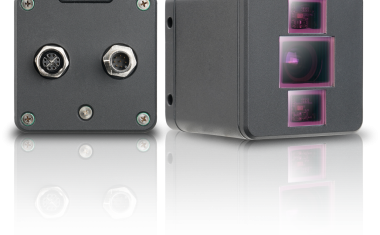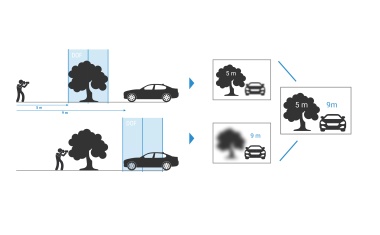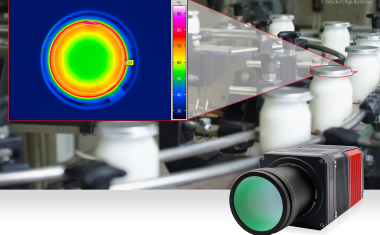On the Fast Lane
Machine vision interface standards and standards in general usually have pros and cons - it is rare to find a technology that ticks all the boxes. CameraLink is simple, relatively fast, but suffers from restricted cable lengths and expensive cabling. GigE Vision has the benefits of low-cost cabling, long cable lengths and no frame grabber needed. However, it is complex, has a relatively low bandwidth and does not have true real-time performance. Firewire and USB 3.0 have similar pros and cons. CoaXPress, however, is a new digital video specification, soon to be a standard, that outperforms other machine vision interfaces in all areas.
CoaXPress is very fast, scalable, supports long cable lengths, provides power over the cable and is relatively simple. When first introduced to the technology, it is hard to believe it is possible: CoaXPress can transmit video data from a camera at 6.25 Gbits/s whilst powering the camera and sending control data back to the camera at 20 Mbits/s - all at the same time and over a single coaxial cable. It is also scalable, so put eight coax cables together, and the data rate available is now 50 Gbits/sec.
Technology Evolution
In the early days of video and image processing, coaxial cable was extensively used - in fact today it is still widely used in many imaging and machine vision systems. The reason of course is that it is very simple to use, low cost, and allows for long cable runs. When digital video arrived on the scene in machine vision in the early 1990s, cameras started providing digital outputs on wide busses using Low Voltage Differential Signaling (LVDS). This spawned a variety of incompatible cameras, cables and frame grabbers. Meanwhile the trend towards high speed serial links was starting in other industries and was first seen in machine vision with the CameraLink standard (around 2000) which, although it still uses a multi-core cable, does perform a 7:1 serialization of the data onto each line. Over the last ten years the trend towards high-speed serial interfaces has been gathering pace in many areas - particularly in the broadcast and communications industry. For example, we can now all expect high speed internet access over a simple twisted pair phone line - something inconceivable not so long ago. Similarly the recent revolution in HDTV uses HD-SDI (High Definition - Serial Digital Interface) in all studio and professional broadcast environments - and this runs over coax. The result is that due to this continually evolving serial technology and the chipsets that support high speed serial interfaces, it has now become possible to develop and propose a new standard, aptly named "CoaXPress" and able to transmit video data at 6.25 Gbits/sec along with power and control - all over a single coax cable. And be scaleable over multiple coax cables to provide huge bandwidths for systems of the future.
CoaXPress - the Background
The driving force for this new high speed technology derives primarily from image sensor development and the resulting new applications that larger, faster sensors enable - this means much higher speeds are needed to acquire and process the data. Similarly, a low cost system solution using easy-to-use cost-effective coax cabling, supporting long cable runs combined with power and control is also of great benefit. This will allow machine vision to penetrate into new markets as well as providing a great upgrade path for analog systems based around pre-installed coax cabling - especially in high-end medical and defence systems.
The core technology was developed in 2007/08 by Adimec and EqcoLogic, and a "digital coax" demonstrator was first shown at Vision 2008 in Stuttgart. In early 2009 Adimec recognized the need to bring in additional expertise from the frame grabber/system end and invited Active Silicon to join them. These three companies formed the "CoaXPress Consortium" with the goal of making CoaXPress a royalty-free world standard. Subsequently, further companies were invited to join the Consortium, at that stage carefully chosen to be non-competitive, thus resulting in a formidable close-knit working group containing leading technical experts from the industry.
The result was that by November 2009 when the technology was presented and demonstrated at the Vision trade show in Stuttgart, the CoaXPress Consortium won the Vision Award for innovation by unanimous vote from the international jury.
How Does It Work?
The physical layer, developed by EqcoLogic, is the key innovation of the stan-dard-to-be: in order to transmit data at high rates some form of frequency based compensation, or "equalization" is needed to take account of the signal attenuation that increases with frequency and cable length. The received signal is filtered into many different frequency bands and each band is analyzed and adapted to compensate for the attenuation of the cable. The clever bit is that this is done dynamically in real-time to maintain excellent data integrity for the 6.25 Gbit/s "downlink" (camera to host). Then at the same time, a lower frequency "uplink" at 20 Mbits/s (host to camera) with careful edge rate control, so as not to interfere with the downlink, provides communication and control back to the camera. Since the data is AC coupled, it is a relatively easy task to also provide DC power to the camera. This is provided at 24V so as long cable runs can be accommodated, with a maximum of 13W per cable available at the camera.
In terms of the protocol, it follows the standard layered approach, with a logical top layer mapping to a stream which in turn is packetized for transmission at the physical layer. The protocol supports a variety of image and meta-data streams - for example conventional raw image data, compressed images, non-rectangular and multiple/dynamic regions of interest.
Why Coax?
The simply answer is that coax is physically the best, most reliable and consistent medium for the transmission of high speed data. Alternatives such as "twisted pair" suffers from intra-pair skew as speeds and distances increase. Coax also has many other useful benefits - low cost, simple to use, easy to terminate in the field, plus a large range of cabling, including multi-cores, are readily available driven primarily by the broadcast market (e.g. high flex, rugged environment, military grade etc). It should be noted however that fiber optic cable is also well suited as a physical layer for CoaXPress. New initiatives such as Intel's LightPeak, that can provide a physical 10Gbit/sec bi-directional link, given that it is protocol independent, looks like it could be a good fit for CoaXPress.
Standardization
For any technology to evolve into an international standard, a recognized hosting body is required and the CoaXPress Consortium has recently handed over ownership of the specification to the Japan Industrial Imaging Association (JIIA) for the standardization process that is anticipated to complete by the end of the year. In Japan, 60% of industrial vision applications still use analog cameras (and hence coax cable) so CoaXPress provides a good opportunity for the migration to high speed digital cameras with all the associated benefits of higher resolution and faster speeds. The EMVA (European Machine Vision Association) and the AIA (Automated Imaging Association) have recently voted (via the G3 Agreement between these hosting bodies) to support CoaXPress for the benefit of their members as a global standard. This support is subject to two conditions - firstly, that security of supply of the crucial EqcoLogic chips is guaranteed by placing the chip design into an escrow and secondly, that a reference design is made available by JIIA that provides an implementation of the transceiver interface using alternative off-the-shelf components as an alternative to the integrated EqcoLogic solution. For international standards, it is important that within reason, the implementation is not dependent on a single supplier component.
Further Information
Further information and technical details on CoaXPress may be found at www.coaxpress.com - this is a website that the CoaXPress Consortium is maintaining on behalf of JIIA as the focal point for technical information, news and general status about the standardization process.







